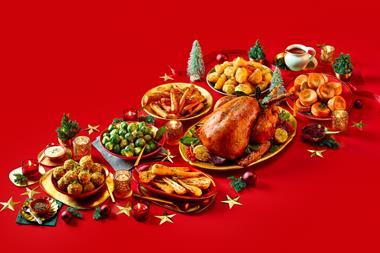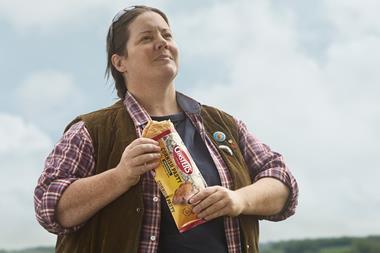Have the discounters pulled off the PR coup of the decade? Their transformation from grocery’s poor relations to the saviours of cash-strapped shoppers has been nothing short of remarkable.
It’s a transformation based on the received wisdom that, in these turbulent economic times, they boast the cheapest food offer in town.
Sales at Aldi are up 25.4% this year to date, while TNS data shows Tesco lost £10m in sales to Aldi alone in the last quarter. Tesco has fought back with its Britain’s Biggest Discounter campaign in a bid to stop the shoppers’ migration to the discounters, reviving the tertiary brand. But are the multiples fighting an imaginary enemy?
ESA research carried out exclusively for The Grocer has exploded the myth that discounters are cheaper than the multiples. A shopping list of 50 ‘essential’ grocery items (see right) were sourced from the four leading multiples and three top discounters. Of the 33 items that were available in all of the stores (see table, over), Aldi, Lidl and Netto were consistently more expensive places to shop than the big four multiples.
And we’re not just talking a few pence here and there. Taking the cheapest price on a range of everyday items – from tea bags to cola – an Aldi shop was a whopping £10 dearer than Tesco. And Tesco’s knee-jerk response looks a bit like Wyatt Earp turning up to the OK Corral with a cap gun, and watching Billy Claiborne call the mob in.
“It’s a surprise that the discounters are the most expensive,” says Robert Clark, senior partner at Retail Knowledge Bank. “But led by Tesco, the others are clearly looking at the price of their value ranges. Aldi and Lidl have less scope because of their smaller range of products.”
Over our 50-item shop, the limited ranges of the discounters really make a difference. The cheapest kilogram of rice, for instance, is almost three times dearer in Aldi than Asda. A four pack of Lidl toilet rolls, meanwhile, costs more than £1 more than at Tesco. And the list goes on.
However, Aldi MD Paul Foley suggests this analysis fundamentally misunderstands the discounters’ appeal. “I’m not in the least surprised to learn these findings,” says Foley. “In the grocery industry there’s a range of different qualities and I don’t sell ‘value’ products in any category. I sell the equivalent of finest own label or brands. If you want the highest quality and the lowest price for that quality, we own that ground.”
This approach has driven the stellar growth in Aldi’s sales, he says. “Shoppers will look around for where they can get the quality they want – that’s why we are winning market share and new customers.” Lidl toes a similar line. “We do not have a ‘value’ range, we sell premium quality products at the cheapest possible prices and more and more people are beginning to realise this,” says a spokesman.
Going upmarket was successful in repositioning the discounters (after a slow start) in the good times. And our taste test (see p51) suggests that its cheapest on-display products are better, though it’s at a premium, of course. But others argue quality now comes a long second behind price in the current climate. In a recent Harris Interactive survey on the reasons why shoppers switch supermarkets, 54% said price was the most important factor (at 21%, healthy eating was a long second behind). And analysts are sceptical of Foley’s theory that it’s quality that is driving shoppers to the discounters.
“They’re gaining share based on a discount perception,” says Natalie Berg, grocery research manager at Planet Retail. “People see it as a no-frills experience.”
“I still believe discounters are a commodity shop,” adds Clark. “For many people they’re a second shop for items they believe they can get cheaper than in one of the big supermarkets.”
How then, have the discounters created this perception of cheapness, when the evidence is to the contrary? Clark believes it has been cleverly built up by delivering a small number of headline-grabbing offers over a number of years, slowly luring shoppers in – Lidl’s much-publicised £5 lobster last month being a classic example.
“The discounters have historically had really cheap offers as part of their range. These make an impression on their own customers and – more so now because of their advertising – on their rivals’ customers. You could almost call it guerilla marketing over a number of years.”
PR has also played its part. Having rarely courted the media since its arrival in Britain in 1989, Aldi has climbed right into bed with the press since the economy nosedived, with Foley embarking on a charm offensive that would make even Sainsbury's boss Justin King beam with pride.
“The media have got behind the discounters and they have got much more coverage in tried-and-tested columns,” says one senior retail executive. But he also believes the consistency and simplicity of their limited, single-tiered offer is appealing. “People will go to a discounter because they don’t want to be tempted to trade up,” he says. “And they are opening in higher-profile locations with better property.”
With better prices, bigger ranges and a one-stop shopping experience (between the discounters there were 15 items the shoppers could not have bought), many believe Tesco gave Aldi and Lidl unnecessary publicity with its Discounter range. But Tesco claims the range has brought an additional 300,000 customers back to the supermarket, and it says the reason like-for-like sales grew just 2% in the last quarter is because of a conscious decision to sacrifice sales value for volume.
“It is a planned strategy for the particularly tough times customers are facing and are going to face next year. And the early signs are that it is working,” says corporate affairs director Lucy Neville-Rolfe. “Before we brought in the discount lines, we were losing customers to Aldi and Lidl but I think the rate of loss has gone down.”
Christopher Hogbin, senior analyst at Sanford Bernstein, agrees that the launch of the Discounter range will reduce switching from Tesco to hard discounters. “The products are largely positioned between the price points of its existing standard and value private-label products, effectively providing a private-label price point for customers who want to buy cheaper products but are perhaps not willing to buy Tesco brand products.”
The price point of Tesco’s Discounter products almost exactly match the price point of Aldi, he adds. But as well as recording the lowest prices in our survey, it’s Asda that looks to be Tesco’s greatest threat, with about £22m of sales switching directly from Tesco to Asda in the 12 weeks to 2 November, according to TNS. “We’re the only one of the big four supermarkets gaining share from the discounters,” adds Asda CEO Andy Bond.
Perception, they say, is more compelling than reality. In the case of Asda, the reality is pretty compelling too.
Sales at Aldi are up 25.4% this year to date, while TNS data shows Tesco lost £10m in sales to Aldi alone in the last quarter. Tesco has fought back with its Britain’s Biggest Discounter campaign in a bid to stop the shoppers’ migration to the discounters, reviving the tertiary brand. But are the multiples fighting an imaginary enemy?
ESA research carried out exclusively for The Grocer has exploded the myth that discounters are cheaper than the multiples. A shopping list of 50 ‘essential’ grocery items (see right) were sourced from the four leading multiples and three top discounters. Of the 33 items that were available in all of the stores (see table, over), Aldi, Lidl and Netto were consistently more expensive places to shop than the big four multiples.
And we’re not just talking a few pence here and there. Taking the cheapest price on a range of everyday items – from tea bags to cola – an Aldi shop was a whopping £10 dearer than Tesco. And Tesco’s knee-jerk response looks a bit like Wyatt Earp turning up to the OK Corral with a cap gun, and watching Billy Claiborne call the mob in.
“It’s a surprise that the discounters are the most expensive,” says Robert Clark, senior partner at Retail Knowledge Bank. “But led by Tesco, the others are clearly looking at the price of their value ranges. Aldi and Lidl have less scope because of their smaller range of products.”
Over our 50-item shop, the limited ranges of the discounters really make a difference. The cheapest kilogram of rice, for instance, is almost three times dearer in Aldi than Asda. A four pack of Lidl toilet rolls, meanwhile, costs more than £1 more than at Tesco. And the list goes on.
However, Aldi MD Paul Foley suggests this analysis fundamentally misunderstands the discounters’ appeal. “I’m not in the least surprised to learn these findings,” says Foley. “In the grocery industry there’s a range of different qualities and I don’t sell ‘value’ products in any category. I sell the equivalent of finest own label or brands. If you want the highest quality and the lowest price for that quality, we own that ground.”
This approach has driven the stellar growth in Aldi’s sales, he says. “Shoppers will look around for where they can get the quality they want – that’s why we are winning market share and new customers.” Lidl toes a similar line. “We do not have a ‘value’ range, we sell premium quality products at the cheapest possible prices and more and more people are beginning to realise this,” says a spokesman.
Going upmarket was successful in repositioning the discounters (after a slow start) in the good times. And our taste test (see p51) suggests that its cheapest on-display products are better, though it’s at a premium, of course. But others argue quality now comes a long second behind price in the current climate. In a recent Harris Interactive survey on the reasons why shoppers switch supermarkets, 54% said price was the most important factor (at 21%, healthy eating was a long second behind). And analysts are sceptical of Foley’s theory that it’s quality that is driving shoppers to the discounters.
“They’re gaining share based on a discount perception,” says Natalie Berg, grocery research manager at Planet Retail. “People see it as a no-frills experience.”
“I still believe discounters are a commodity shop,” adds Clark. “For many people they’re a second shop for items they believe they can get cheaper than in one of the big supermarkets.”
How then, have the discounters created this perception of cheapness, when the evidence is to the contrary? Clark believes it has been cleverly built up by delivering a small number of headline-grabbing offers over a number of years, slowly luring shoppers in – Lidl’s much-publicised £5 lobster last month being a classic example.
“The discounters have historically had really cheap offers as part of their range. These make an impression on their own customers and – more so now because of their advertising – on their rivals’ customers. You could almost call it guerilla marketing over a number of years.”
PR has also played its part. Having rarely courted the media since its arrival in Britain in 1989, Aldi has climbed right into bed with the press since the economy nosedived, with Foley embarking on a charm offensive that would make even Sainsbury's boss Justin King beam with pride.
“The media have got behind the discounters and they have got much more coverage in tried-and-tested columns,” says one senior retail executive. But he also believes the consistency and simplicity of their limited, single-tiered offer is appealing. “People will go to a discounter because they don’t want to be tempted to trade up,” he says. “And they are opening in higher-profile locations with better property.”
With better prices, bigger ranges and a one-stop shopping experience (between the discounters there were 15 items the shoppers could not have bought), many believe Tesco gave Aldi and Lidl unnecessary publicity with its Discounter range. But Tesco claims the range has brought an additional 300,000 customers back to the supermarket, and it says the reason like-for-like sales grew just 2% in the last quarter is because of a conscious decision to sacrifice sales value for volume.
“It is a planned strategy for the particularly tough times customers are facing and are going to face next year. And the early signs are that it is working,” says corporate affairs director Lucy Neville-Rolfe. “Before we brought in the discount lines, we were losing customers to Aldi and Lidl but I think the rate of loss has gone down.”
Christopher Hogbin, senior analyst at Sanford Bernstein, agrees that the launch of the Discounter range will reduce switching from Tesco to hard discounters. “The products are largely positioned between the price points of its existing standard and value private-label products, effectively providing a private-label price point for customers who want to buy cheaper products but are perhaps not willing to buy Tesco brand products.”
The price point of Tesco’s Discounter products almost exactly match the price point of Aldi, he adds. But as well as recording the lowest prices in our survey, it’s Asda that looks to be Tesco’s greatest threat, with about £22m of sales switching directly from Tesco to Asda in the 12 weeks to 2 November, according to TNS. “We’re the only one of the big four supermarkets gaining share from the discounters,” adds Asda CEO Andy Bond.
Perception, they say, is more compelling than reality. In the case of Asda, the reality is pretty compelling too.
Shopping List
Beer/lager, 440ml-500ml cans, 4-pack
Red wine, 75cl bottle
White wine, 75cl bottle
Jam doughnuts, 5-pack (2,3,4)
Bread, medium white loaf, 800g
Baps/rolls, soft white 4/6-pack
Eggs, medium, 6-pack
Milk, semi-skimmed, 4 pints (2.27-litre)
Cheddar cheese, mild white medium block
Coffee, powder/granules 100g
Cola, 2-litre
Lemonade, 2-litre
Orange juice, chilled, fresh 1-litre
Tea bags, 80-pack
Milk chocolate, 100g block
Chocolate chip cookies, 200g (2)
Tinned chopped tomatoes, 400g
Cornflakes, 500g
Crisps, assorted 12-pack (1,2)
Digestive biscuits, 400g-500g
Gravy granules, beef/chicken, 170g (3)
Ham slices, (not wafer-thin) 125g (3,4)
Ketchup, 500g-600g
Margarine/spread, 500g
Pasta, any, 1kg (4)
Rice, any, 1kg
Rich tea biscuits, 300g
Tinned tuna, in brine/oil, 180g-200g
Chicken breasts, fresh, 4-pack, 500g (4)
Mince, fresh, 500g (3,4)
Sausages, fresh, thick, 8-pack
Fish fingers, frozen, any, 10/12-pack (2,3)
Oven chips, frozen, any, 1.5kg-2kg (3)
Peas, frozen, 0.8kg-1kg
Apples, any pack (approx 7 apples)
Carrots, 1kg-1.5kg
Potatoes, any, 2.5kg
Tomatoes, fresh, 6-pack
Conditioner, any, 300ml-400ml
Nappies, mini/maxi/junior 18/24-pack (2)
Shampoo, (any) 300ml-400ml
Shower gel, any, 300ml-400ml
Soap, any, 4-pack (3)
Kitchen rolls, any, 2-pack (3,4)
Tin foil, 20m, 300mm-450mm wide
Toilet rolls, any, 4-pack
Washing powder, any, 1.2kg (2,4)
Washing-up liquid, any, 500ml
Catfood, tinned, any, 400g
Dogfood, tinned, any, 400g (3)
NOT STOCKED IN
(1) Asda (2) Aldi (3) Lidl (4) Netto
Beer/lager, 440ml-500ml cans, 4-pack
Red wine, 75cl bottle
White wine, 75cl bottle
Jam doughnuts, 5-pack (2,3,4)
Bread, medium white loaf, 800g
Baps/rolls, soft white 4/6-pack
Eggs, medium, 6-pack
Milk, semi-skimmed, 4 pints (2.27-litre)
Cheddar cheese, mild white medium block
Coffee, powder/granules 100g
Cola, 2-litre
Lemonade, 2-litre
Orange juice, chilled, fresh 1-litre
Tea bags, 80-pack
Milk chocolate, 100g block
Chocolate chip cookies, 200g (2)
Tinned chopped tomatoes, 400g
Cornflakes, 500g
Crisps, assorted 12-pack (1,2)
Digestive biscuits, 400g-500g
Gravy granules, beef/chicken, 170g (3)
Ham slices, (not wafer-thin) 125g (3,4)
Ketchup, 500g-600g
Margarine/spread, 500g
Pasta, any, 1kg (4)
Rice, any, 1kg
Rich tea biscuits, 300g
Tinned tuna, in brine/oil, 180g-200g
Chicken breasts, fresh, 4-pack, 500g (4)
Mince, fresh, 500g (3,4)
Sausages, fresh, thick, 8-pack
Fish fingers, frozen, any, 10/12-pack (2,3)
Oven chips, frozen, any, 1.5kg-2kg (3)
Peas, frozen, 0.8kg-1kg
Apples, any pack (approx 7 apples)
Carrots, 1kg-1.5kg
Potatoes, any, 2.5kg
Tomatoes, fresh, 6-pack
Conditioner, any, 300ml-400ml
Nappies, mini/maxi/junior 18/24-pack (2)
Shampoo, (any) 300ml-400ml
Shower gel, any, 300ml-400ml
Soap, any, 4-pack (3)
Kitchen rolls, any, 2-pack (3,4)
Tin foil, 20m, 300mm-450mm wide
Toilet rolls, any, 4-pack
Washing powder, any, 1.2kg (2,4)
Washing-up liquid, any, 500ml
Catfood, tinned, any, 400g
Dogfood, tinned, any, 400g (3)
NOT STOCKED IN
(1) Asda (2) Aldi (3) Lidl (4) Netto


















No comments yet